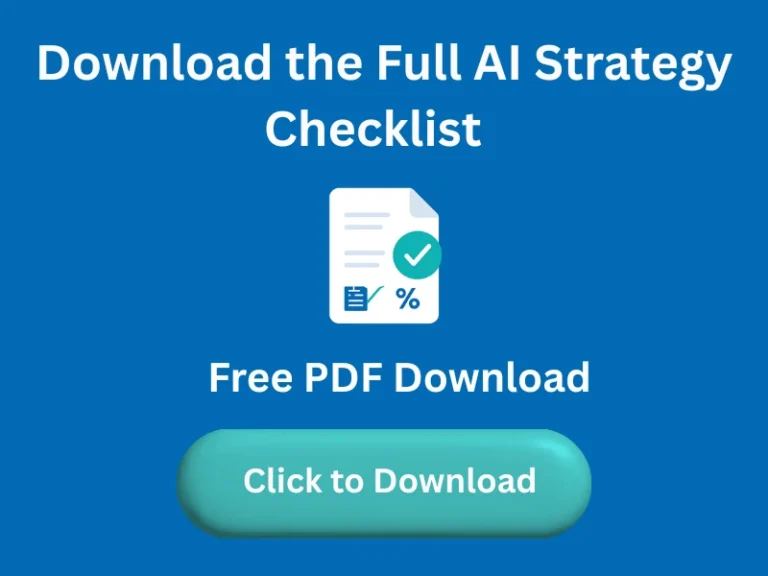Author: Laiba Aslam Updated on: 30th June, 2025
Executive Summary:
Large tech businesses are no longer the only ones who can create a successful AI strategy. If they get it right, U.S. small and mid-sized businesses (SMEs) stand to benefit the most in 2025; if they don’t, they risk losing time and money.
This guide will teach you:
- Why is AI strategy no longer a luxury but rather a necessity for SMEs?
- How to organize, test, and expand your AI initiatives with a measurable return on investment?
- A downloadable AI Strategy Checklist and helpful tips for avoiding common pitfalls.
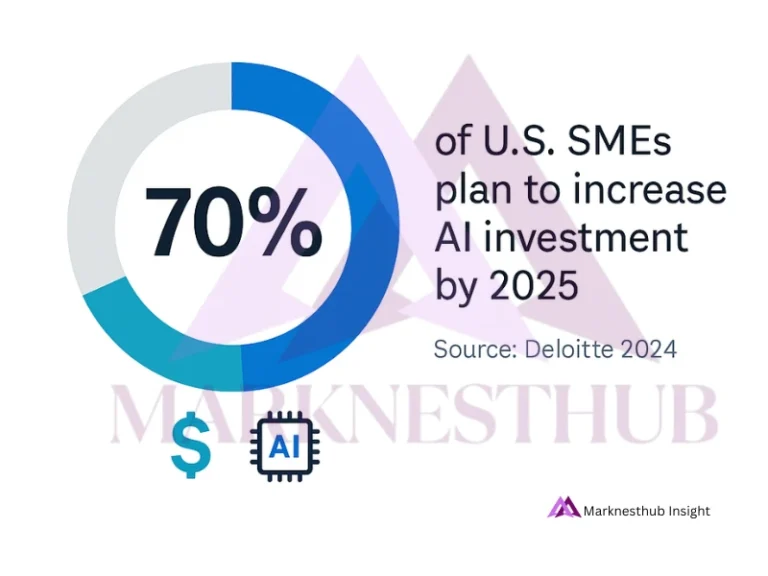
Lead-in: Why now?
Only Fortune 500 companies had boardroom conversations about “AI” a few years ago. These days, it’s in your CRM, marketing emails, customer service, and the strategies used by your rivals.
“In my experience, the biggest mistake I see SMEs make is jumping on AI tools without a plan,” says Jane Doe, PhD, Chief AI Strategist at MarknestHub. “A clear strategy protects your budget, your people, and your future.”
So, how do you build an AI strategy that actually works?
The Situation of AI for American SMEs:
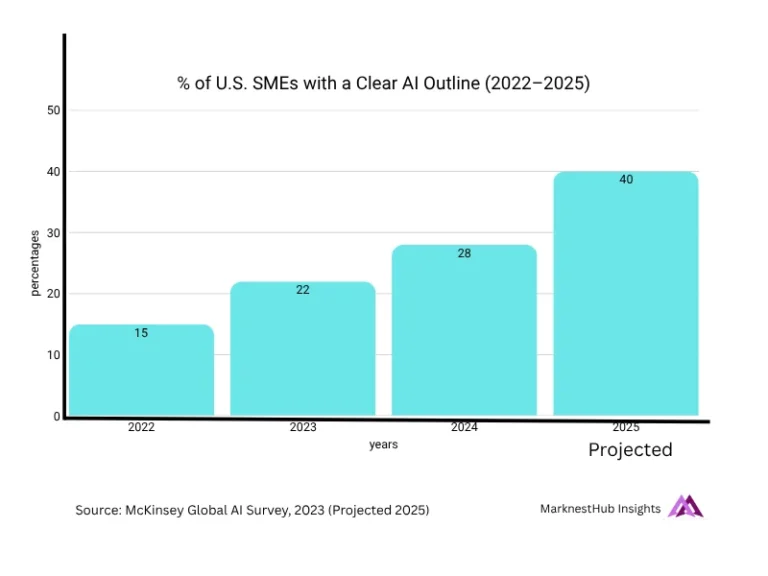
75% of mid-sized U.S. companies say AI is now essential for remaining competitive, but less than 30% have a clear guideline, according to McKinsey’s 2024 Global AI Survey.
Without a plan, SMEs run the risk of:
- Wasted money on incompatible tools
- Angry teams with insufficient expertise
- Lost chances to automate tedious tasks
- No return on investment, or worse, lost clients
Typical Mistakes and How to Avoid Them
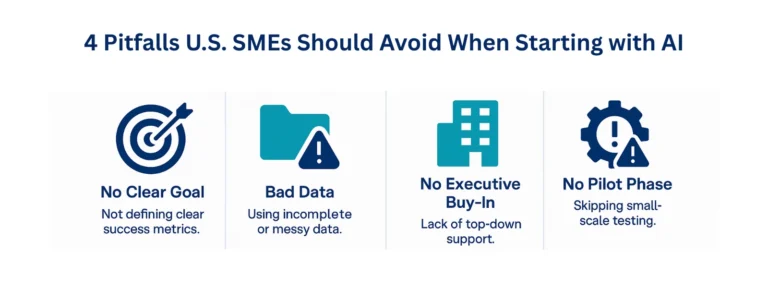
Too many businesses get excited by the hype surrounding AI, but then they find themselves stuck.
The typical traps are as follows:
- Purchasing Prior to Planning
AI vendors often make great claims. However, a gadget that lacks a strategy is a waste of money. - Ignoring the Readiness of the Data
AI projects are quickly destroyed by poor, disorganized, and insufficient data. - Failure to Upskill Your Staff
People must learn how to use and maintain a sophisticated AI tool; it doesn’t operate itself. - Lack of support from executives
Your strategy dies in a slide deck if your leadership team doesn’t support it.
AI Strategy Framework for Marknesthub
Our clients use this easy 4-step framework to create an AI strategy that works and continues to work.
1. Evaluate:
- Prioritize your business objectives over the technology.
- What aspects of costs, revenue, and productivity do you hope AI will increase?
- Conduct an audit of data preparedness.
2. Make a plan
- Don’t try to do everything at once; instead, choose one or two high-impact use cases.
- Create your business case, including the break-even point, costs, and benefits.
- Obtain early executive support.
3. pilot
- Do a small-scale test of your AI project.
- Measure measurable KPIs.
- Before you spend a lot of money, fix the kinks.
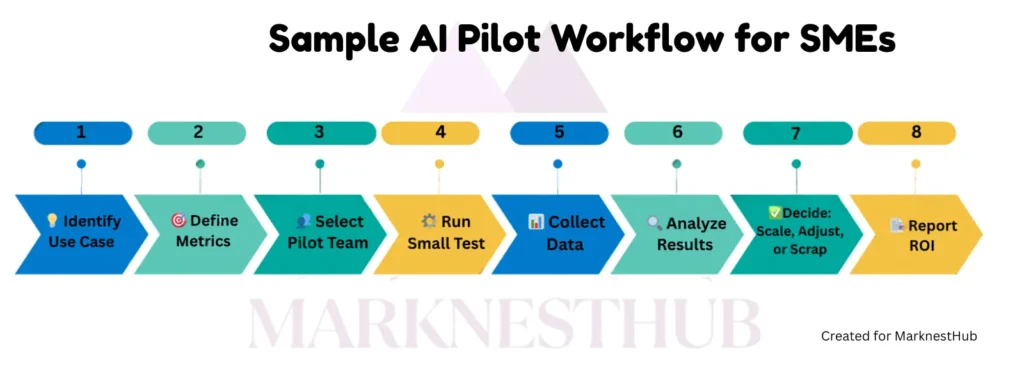
4. the scale
- Expand if your pilot is successful.
- Record the lessons you’ve learned.
- For long-term operation, upskill your staff.
Real-World Example
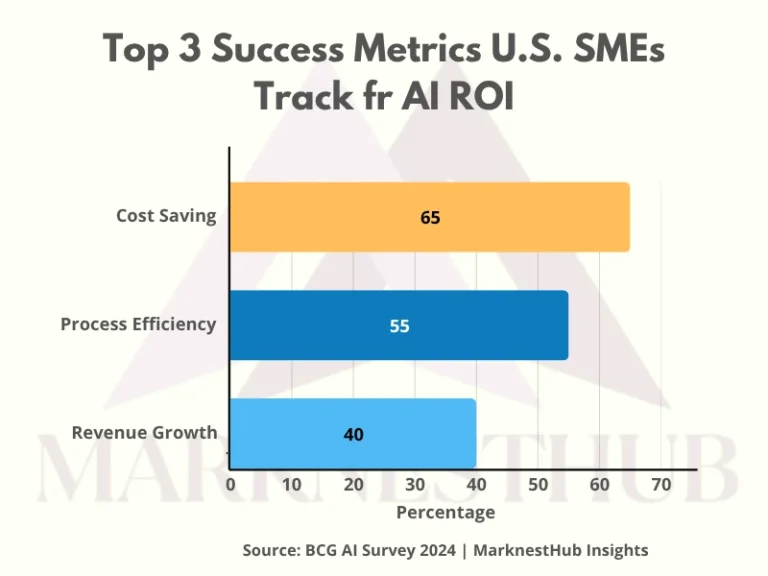
Midwest Manufacturing Co. is a real-world case study.
Reducing machine downtime was the goal of this U.S. SME. They conducted a small AI pilot for predictive maintenance, which fixes issues before they arise. The outcome?
- 20% less time spent offline
- Savings of $150,000 per year
- Currently expanding plant-wide
The Practical AI Strategy Checklist
Before you call a vendor, run this quick test:
- Do you have clean, accessible data?
- Do you know exactly what problem AI will solve?
- Is your leadership team committed?
- Do you have budget and timeline clarity?
- Are you ready to train your people?
Next Steps: Start Smart, Grow Smart
AI is not a magic switch — it’s a practical tool. The winners in 2025 will be SMEs that:
Start small
Stay focused on ROI
Keep learning
Ready to build your custom AI guideline?


